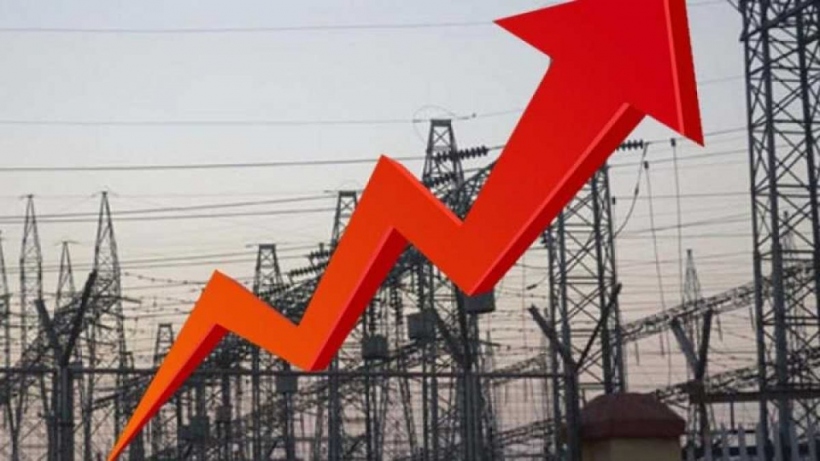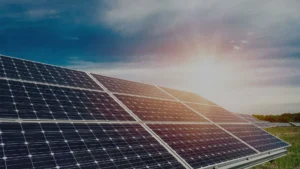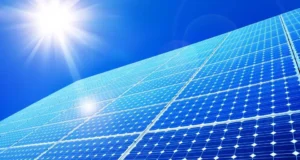You may have recently noticed a significant increase of electricity tariffs in Pakistan. Over the past four years, the average electricity tariff for residential consumers in Pakistan has increased by over 50%. This steep price hike is largely due to the rising cost of fuel for power generation, transmission and distribution losses, and the need to service growing debt obligations of power sector entities. While the government has taken some steps to reduce electricity theft and improve efficiency, the benefits have not translated into lower costs for end consumers. Pakistan’s fragile economy and high inflation have made rising utility costs an additional burden on household budgets across the country. For the average Pakistani, this means having to allocate a greater share of income to pay for a basic necessity like electricity
Overview of Increase of Electricity Tariffs in Pakistan over the past Four Years

Increase of Electricity Tariffs in Pakistan over the past Four Years. According to studies by various energy sector organizations, the average electricity tariff has increased by over 50% between 2019 to 2023. This significant hike can be attributed to rising fuel prices, the increased cost of electricity generation, and the accumulation of “circular debt” in the energy sector.
The primary reason for increasing electricity prices is the higher cost of generating power. Pakistan’s electricity is generated mostly through oil and gas, the prices of which have gone up considerably on the global market. The cost of oil and liquefied natural gas (LNG) imports for power plants has increased exponentially. Additionally, the depreciation of the Pakistani Rupee against the US Dollar has further amplified the rise in fuel costs.
Another factor contributing to higher tariffs is the buildup of “circular debt” in the energy sector due to non-payments and system inefficiencies. The government has had to increase consumer tariffs to help clear this debt and keep the power sector operational. According to analysts, the inter-corporate debt in the energy sector has ballooned to over Rs2.4 trillion.
In summary, multiple elements have coalesced to push up the average cost of electricity for consumers in Pakistan by over 50% in just 4 years. While increased power generation costs and a weaker currency have been the primary drivers, the accumulation of circular debt has also necessitated higher tariffs. Going forward, addressing inefficiencies, reducing reliance on imported fuels and adding cheaper renewable energy can help make electricity more affordable in Pakistan.
Major Causes Behind the Rising Electricity Prices
Increase of electricity tariffs in Pakistan over 50% in just the past 4 years due to various factors.
The primary reason behind the consistent increase is the rising cost of fuel, especially furnace oil and natural gas, used to generate electricity. The fuel cost component comprises around 60-70% of the overall electricity generation cost in Pakistan. As international fuel prices rise, the cost of generating electricity also increases significantly, which translates into higher consumer tariffs.
Another major factor is the depreciation of the Pakistani Rupee against the US Dollar. Pakistan imports furnace oil for power plants, so when the Rupee weakens, the cost of these fuel imports rises in Rupee terms. This additional cost is then passed onto consumers in the form of increased tariffs.
Transmission and distribution (T&D) losses and power theft also contribute to higher tariffs. The average T&D losses in Pakistan are around 20% due to an aging and inefficient grid infrastructure. And power theft accounts for losses of over $2 billion per year. The costs of these inefficiencies and theft are distributed among paying consumers.
In addition, the delayed payment of dues by government, private and residential consumers strains the cash flows of power companies, forcing them to increase consumer tariffs to remain viable. The build-up of ‘circular debt’ in the power sector exceeds Rs.1.4 trillion, and its servicing costs around Rs.38 billion per month, which again translates into higher tariffs.
The aforementioned combination of rising fuel costs, currency depreciation, transmission losses and circular debt have together led to a 50% increase in the average electricity tariff for consumers in Pakistan over just the past 4 years. Significant reforms and improvements are urgently needed to make the power sector sustainable and affordable for the population.
Impact of Higher Tariffs on Households and Businesses
The increase increase of electricity tariffs in Pakistan has significantly impacted both households and businesses.
Households
For the average household, the higher cost of electricity means a larger percentage of income is now spent on utility bills. From 2015 to 2019, the per unit cost of electricity increased by over 50% for residential consumers. This translates into average monthly electricity bills that are 60-70% higher for a typical household. The higher costs force difficult choices between necessities like food, education, and healthcare.
Businesses
Higher energy costs also hurt the business sector by increasing operating expenses, especially for small and medium sized enterprises in energy-intensive industries like textiles, steel, and cement. The higher tariffs make Pakistani products less competitive in domestic and international markets, ultimately slowing economic growth. The Federation of Pakistan Chambers of Commerce and Industry estimates that for every 1% increase in energy costs, economic growth declines by 0.3-0.4%.
To mitigate the impact, the government has taken some measures like increasing the number of subsidized units for lower-income residential consumers and introducing time-of-use tariffs for commercial and industrial consumers. However, these steps have provided limited relief. More substantive solutions are needed, such as improving the efficiency of electricity supply and incentivizing energy conservation by both suppliers and consumers. Until then, increase of electricity tariffs in Pakistan pose a significant burden on households and a barrier to business growth in Pakistan.
Government Justifications for the Electricity Tariff Hikes
The government has justified the steady increase of electricity tariffs in Pakistan over the past four years as necessary to reduce circular debt and make the power sector financially viable.
Reducing Circular Debt
The government argues that increase of electricity tariffs in Pakistan are required to decrease the circular debt in the power sector, which has crippled the entire energy system. Circular debt refers to the failure of distribution companies (DISCOs) to pay power producers, who then cannot pay fuel suppliers, who in turn cannot pay oil refineries and gas companies. The government claims increasing end-user tariffs will provide DISCOs the necessary funds to pay power producers to settle these debts.
Improving Power Infrastructure
The government also contends that greater revenue from higher tariffs is needed to upgrade Pakistan’s aging power infrastructure, including power plants, transmission lines, and distribution networks. Much of the country’s infrastructure has not been properly maintained or updated for decades, resulting in high inefficiencies and power losses. Additional funds are required for new power projects to meet the country’s growing energy demands.
Making Power Sector Profitable
A further justification given for raising tariffs is that they will make the power sector financially self-sustainable in the long run. For years, the sector has been heavily subsidized by the government to keep tariffs artificially low. However, this has led to a growing “subsidy burden” on the government and a power sector that continues to post financial losses. The government argues higher tariffs will reduce or eliminate the need for subsidies and make power generation and distribution profitable businesses.
While the government’s intentions to fix the ailing power sector may be reasonable, the consistent and steep hikes in electricity tariffs have placed enormous strain on ordinary citizens and businesses. There is an urgent need to find a balanced solution that reduces inefficiencies, improves the power infrastructure, and makes the sector financially viable without overburdening power consumers who have seen their costs rise dramatically. Overall, a collaborative approach between the government and citizens may yield the most constructive results.
Public Reaction and Protests Against Increased Prices
The frequent and steep increase of electricity tariffs in Pakistan over the past four years have understandably elicited strong reactions from the public. Bills that were once affordable for the average household have skyrocketed, placing a huge financial burden on families and businesses.
Protests Against Price Hikes
As the National Electric Power Regulatory Authority (NEPRA) has approved greater and greater tariff increases each year, citizens have banded together in protest against increase of electricity tariffs in Pakistan. In early 2019, the “Awam Ki Awaz” movement launched a campaign against inflated utility bills, organizing demonstrations in major cities calling for an end to “unjustified” hikes. The Pakistan Tehreek-e-Insaf party also held rallies protesting price gouging by utility companies.
Impact on Households and Businesses
The increase of electricity tariffs in Pakistan had a ripple effect throughout the economy. For residential customers, electricity now makes up a sizable portion of monthly expenses, forcing difficult budgetary choices. Industrial and commercial users claim the rates threaten their viability and competitiveness. Some businesses have had to scale back operations or lay off workers to offset costs.
Government Response
Officials acknowledge citizens’ frustrations but defend the increases as necessary to improve service and infrastructure. NEPRA points out that costs for fuel and power generation have risen substantially. The government has taken some measures to relieve the burden, introducing lower tariffs for lifeline consumers who use minimal amounts of electricity as well as certain commercial and industrial users. However, critics argue these steps do not go far enough and that mismanagement and corruption also drive up costs.
The issue of escalating increase of electricity tariffs in Pakistan is complex with many factors at play. While citizens call for relief and accountability, providers maintain that higher tariffs are unavoidable to maintain and upgrade the power system. Bridging this divide and finding a solution that addresses the concerns of all stakeholders remains an ongoing challenge. Overall, there is no simple or single remedy, but rather a need to re-examine the structure and governance of the power sector to make it more affordable, sustainable, and responsive to public needs.
Switching to solar energy is the best option due to increase of electricity tariffs in Pakistan
Increase of electricity tariffs in Pakistan many individuals and businesses are seeking alternatives to lower their energy costs. One of the most viable options that has gained significant traction is switching to solar energy.
The increasing cost of traditional electricity has become a burden for many households and businesses. With solar energy, however, users can harness power from the sun to meet their energy needs, thereby reducing their reliance on expensive grid electricity. This shift not only provides immediate savings on monthly electricity bills but also offers long-term financial benefits.
By utilizing solar panels and converting sunlight into usable electricity, individuals and businesses can generate their own power and become more self-sufficient. This not only helps in reducing dependence on fossil fuels but also minimizes exposure to fluctuating utility rates.
Moreover, in addition to economic advantages, adopting solar energy contributes positively towards the environment by significantly reducing carbon emissions. By choosing this renewable source of energy, we can collectively combat climate change and reduce our carbon footprint.
In conclusion, as increase of electricity tariffs in Pakistan, switching to solar energy presents itself as the optimal solution for both financial and environmental benefits. Embracing this sustainable alternative empowers individuals and businesses to take control of their energy consumption while contributing towards a greener future for all.
Enabling solutions provides you the best solar solutions in Islamabad Lahore
Enabling Solutions, the leading solar energy company in Islamabad and Lahore, is dedicated to providing top-notch solar solutions for a wide range of sectors. From residential to commercial, industrial to agricultural, Enabling Solutions specializes in designing and installing solar systems with capacities ranging from 5 kW to 500 kW.
As the best solar company in Islamabad and Lahore, Enabling Solutions is committed to delivering high-quality renewable energy solutions that meet the unique needs and requirements of each client. With a team of experts in solar technology and energy management, they ensure that every project is executed flawlessly, resulting in efficient and reliable solar systems.
Enabling Solutions takes pride in their ability to offer comprehensive services that go beyond mere installation. They provide end-to-end solutions, including system design, procurement of high-grade equipment, installation by certified professionals, as well as maintenance and monitoring services. This holistic approach ensures that customers receive exceptional service from start to finish.
Whether it’s for residential properties looking for sustainable energy solutions or large-scale industrial projects requiring significant power generation capacity, Enabling Solutions has the expertise and experience to deliver unparalleled results. By harnessing the power of sunlight through advanced solar technologies, they are playing a pivotal role in promoting clean energy alternatives across Islamabad and Lahore.
With our unwavering commitment to customer satisfaction and years of industry experience under their belt, Enabling Solutions has established itself as the go-to choice for individuals and businesses seeking reliable renewable energy solutions. When it comes to choosing a trustworthy partner for your solar needs in Islamabad or Lahore, look no further than Enabling Solutions – setting new standards for excellence in the renewable energy sector. switching to solar energy is the best option due to increase of electricity tariffs in Pakistan
Conclusion
And so, you as citizens of Pakistan have seen increase of electricity tariffs in Pakistan, increasing over 50% from past 4 years . While the government has claimed these increases are necessary to pay for infrastructure and generation improvements, the reality is the average Pakistani is now paying significantly more of their income for this basic necessity. With the economy slowing and incomes largely stagnant, further tariff hikes threaten to make electricity unaffordable for many. It is time for the government to find ways to curb costs, reduce system losses, and improve operational efficiencies so that citizens aren’t burdened with high power bills they can ill afford. Affordable and reliable electricity is key to Pakistan’s economic growth and prosperity – its citizens deserve an energy policy that puts their wellbeing first. The government must make addressing this issue a priority to ensure a brighter future for Pakistan.





